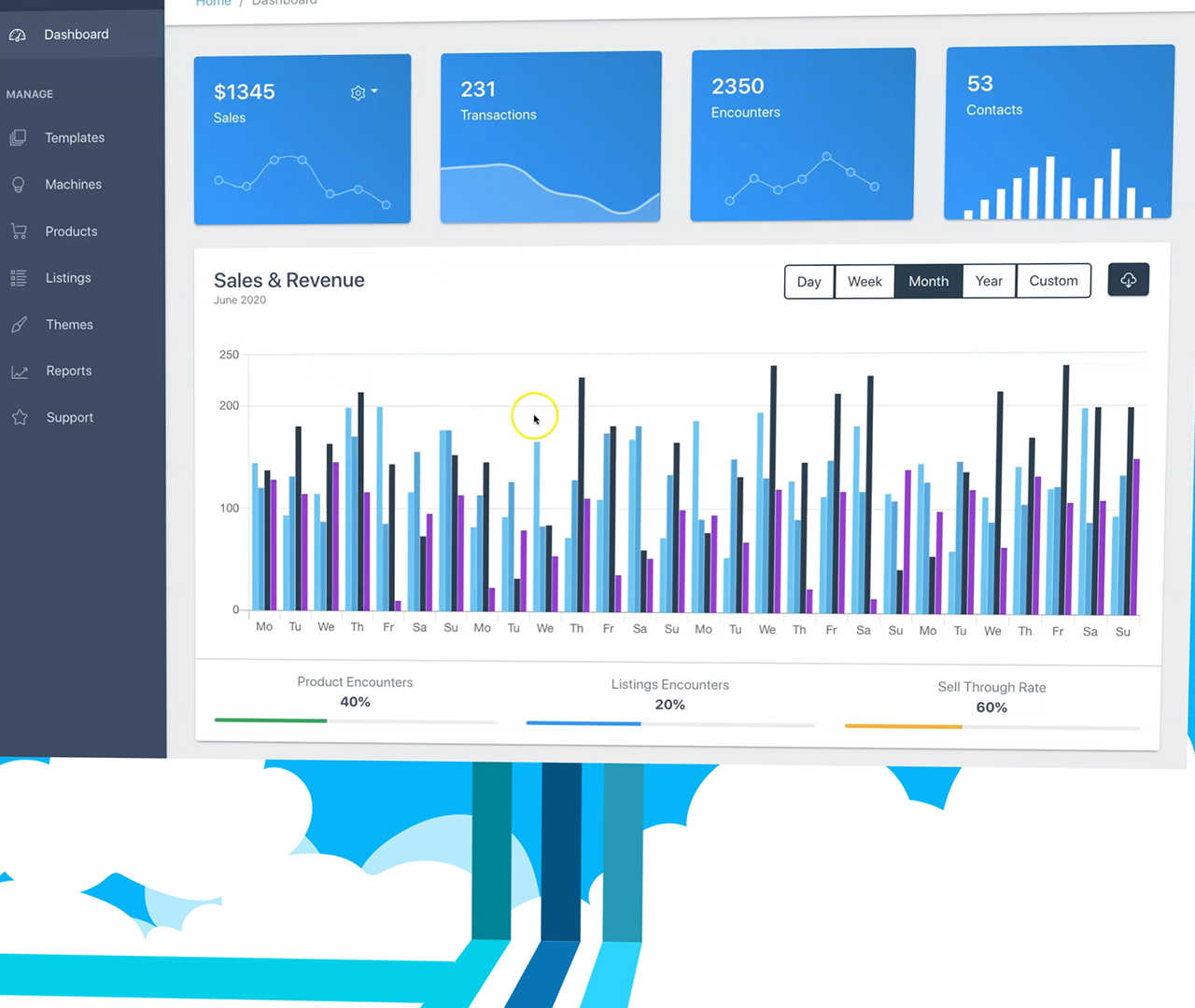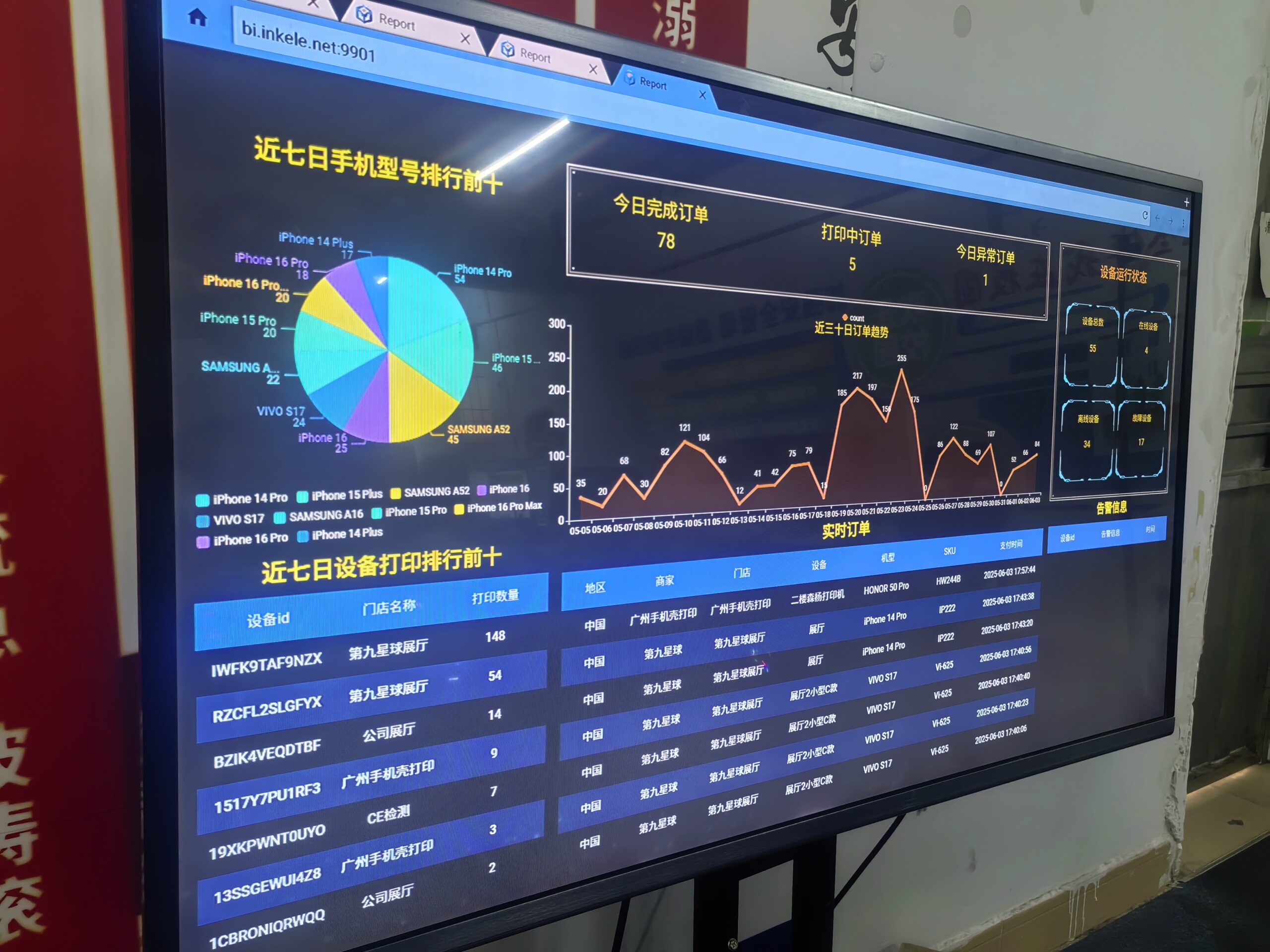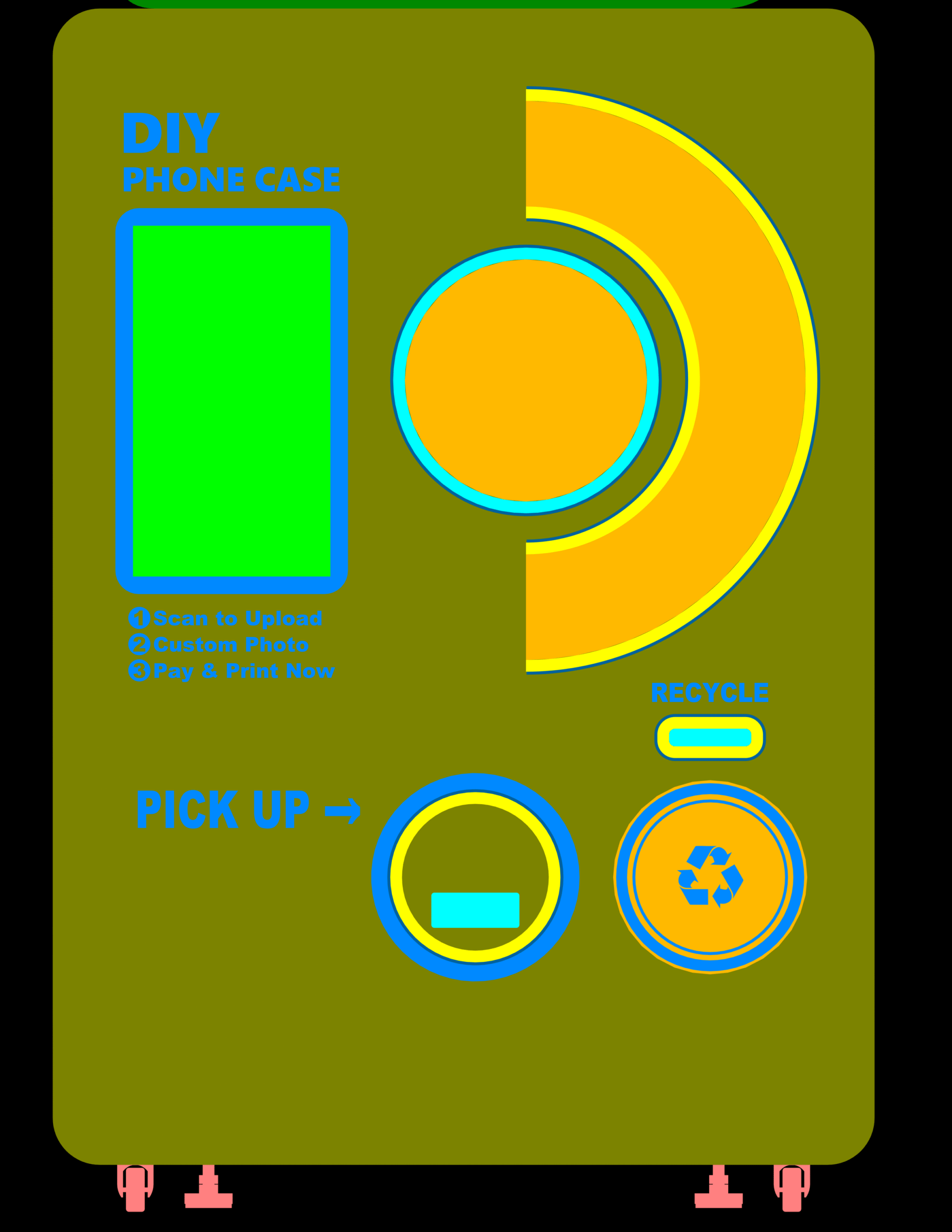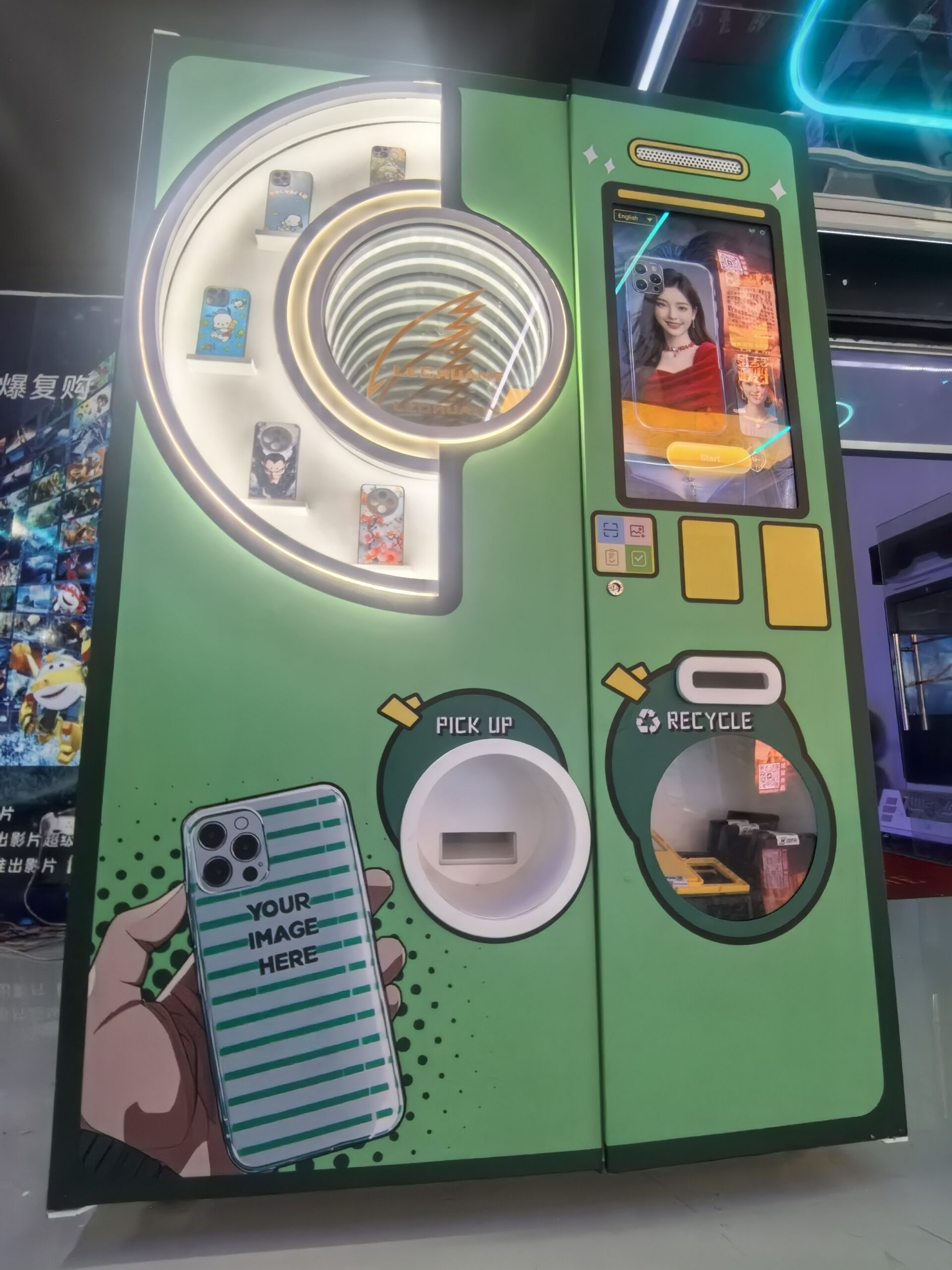
Do phone case vending machines need data?
When I developed the PrintYOLO phone case vending machine, I quickly realized that the machine itself generates a tremendous amount of information. And if you're not paying attention to that information, you're missing out on a lot of opportunities.
Yes, phone case vending machines definitely need data. They collect and use data on sales, inventory, machine operation, and customer behavior to improve efficiency, personalize unique designs, predict demand for specific phone models, and enable remote management. This data helps optimize operations and maximize profit.

In today's connected world, data is king. It's no different for our PrintYOLO machines. For me, it's not enough for a machine to simply print a case; it also needs to be smart about what it prints, when, and for whom. This intelligence comes directly from the data it collects.
Do phone case vending machines rely on data to personalize designs and optimize sales?
One of the most powerful aspects of our PrintYOLO machines is the ability to offer personalized designs. But this isn't magic; it's a direct result of how we collect and use data to understand what customers want.
Yes, phone case vending machines rely heavily on data to personalize designs and optimize sales. By analyzing customer choices, popular trends, location-based preferences, and historical sales, machines can dynamically recommend designs, customize offerings, and manage inventory to maximize appeal and profitability.

For an entrepreneur like me, operating PrintYOLO machines, using data to personalize designs and boost sales is critical. My machines actively collect data on what designs customers choose, what images they upload, and what phone models are most popular. For instance, if data shows that customers at a shopping mall near a university frequently pick designs with abstract patterns, I can push more such designs to that specific machine's library. If another machine in a tourist area sees a lot of interest in cityscape designs, those options will be prioritized there. This isn't just about what's available; it's about what's prominently displayed. Beyond design trends, the machines log sales data, showing which designs sell quickly and which ones sit. This helps me optimize the "digital shelves," ensuring the most appealing options are always front and center, attracting more purchases. I can also track conversion rates for different design categories or marketing messages displayed on the screen. This allows for constant refinement of the offerings, making each machine more profitable and catering better to its specific audience. Ultimately, data allows for a highly adaptive and profitable business model.
| Data Type Collected | How it Personalizes Designs | How it Optimizes Sales |
|---|---|---|
| Design Selection History | Recommends similar popular designs | Highlights top-performing designs |
| Phone Model Popularity | Prioritizes case availability | Ensures popular models are always stocked |
| Location/Time-Based Choices | Tailors themes to local demand | Tailors promotional messages for location |
| Image Upload Frequency | Suggests relevant design tools | Encourages custom case creation by displaying examples |
| Search/Filter Usage (UI) | Refines browsing categories | Simplifies user experience for faster selection |
How does collecting transaction data improve the efficiency of phone case vending machines?
Every time someone buys a phone case from a PrintYOLO machine, a transaction occurs. But it's not just about getting paid; it's about collecting valuable data that I use to make the entire operation run smoother and more effectively.
Collecting transaction data significantly improves the efficiency of phone case vending machines by providing real-time insights into sales volume, popular products by specific metrics, and peak operating hours. This data enables precise inventory management, helps schedule timely maintenance, and optimizes restocking routes, ultimately reducing operational costs and maximizing profitability with minimal human intervention.

Collecting transaction data is absolutely vital for efficiency. Each sale in a PrintYOLO machine records details like the exact time of purchase, the phone model chosen, the design applied, the payment method used, and the final price. All this information is sent to a central cloud system. For me, this data instantly tells me several things. First, sales volume by product: I can see exactly how many iPhone 15 Pro Max cases were sold with a specific custom design versus a pre-made floral pattern. This helps immensely with production planning for blank cases. Second, peak operating hours: If a machine at a specific location consistently sells more cases between 12 PM and 2 PM, I know those are critical hours to ensure it's fully stocked and functional. This helps me schedule maintenance or restocking outside these peak times to minimize disruption. Third, payment method breakdown: Understanding if customers prefer card or mobile payments can influence future payment system upgrades. Fourth, inventory accuracy: Each transaction reduces the stock count of a specific blank case model. This real-time update helps me anticipate restocking needs accurately, avoiding "ghost inventory" issues. By having this granular data, I can optimize everything from my supply chain to my technician dispatch, making the machines operate with maximum efficiency and minimum waste.
| Transaction Data Point | How it Improves Efficiency | Operator Benefit for PrintYOLO |
|---|---|---|
| Sale Timestamp | Identifies peak sales periods, optimizes staffing/restock | Schedule maintenance during low-traffic hours |
| Product Sold (Model/Design) | Informs inventory reorder points for specific items | Avoids stockouts of popular cases, reduces slow-moving inventory |
| Revenue Tracking | Provides real-time financial performance | Immediate insight into machine profitability |
| Payment Method Used | Informs payment system updates/preferences | Ensures machine supports preferred payment options |
| Associated Errors (if any) | Links transaction to potential operational issues | Faster troubleshooting, proactive problem solving |
What types of customer behavior data do these machines gather for better service?
Beyond just selling, my goal with PrintYOLO is to provide an excellent experience. To do that, I rely on understanding what customers do and how they interact with the machines, through data collection.
Phone case vending machines gather customer behavior data such as design browsing patterns, time spent on customization screens, most frequently searched phone models, skipped steps in the purchase journey, and interaction with advertisements. This data helps refine the user interface, optimize design offerings, and tailor marketing messages for better, more intuitive service.

These machines go beyond just recording successful sales. They gather valuable customer behavior data that helps me refine the entire user experience. For example, the PrintYOLO machines track browsing patterns: if many people browse a specific category of designs but don't buy, it might indicate that the designs aren't good enough, or the pricing is too high for that category. It also records time spent on screens: if customers spend too long on the customization screen, it might mean the user interface is too complex, prompting me to simplify it. Or, if they quickly abandon the process after reaching the payment screen, perhaps there's a payment issue or an unexpected fee. The machines also log most frequently searched phone models (even if not in stock), which helps prioritize future inventory decisions. Furthermore, interactions with on-screen promotions or advertisements are tracked. This helps assess the effectiveness of marketing campaigns displayed directly on the machine. All this data points towards friction points or opportunities for improvement. By analyzing these data points, I can work on refining the user flow, making the selection process smoother, clearer, and more enjoyable, which ultimately leads to higher customer satisfaction and more sales. It's all about making the machine as intuitive and helpful as possible for every customer who walks up to it.
| Customer Behavior Data Point | How it Informs Better Service for PrintYOLO Machines | Example Action Based on Data |
|---|---|---|
| Design Browsing Paths | Identifies popular categories vs. abandoned ones | Re-arrange design categories for easier access |
| Time on Screen (per step) | Highlights UI friction points, or engagement areas | Streamline complex customization steps |
| Search Queries/Filters Used | Reveals unfulfilled demand for specific items | Add new phone models/designs to inventory |
| Abandonment Points | Pinpoints where customers drop out of the process | Improve clarity of pricing, simplify payment flow |
| Ad/Promotion Clicks | Measures effectiveness of on-screen marketing | Optimize promo placement, A/B test ad content |
Yes, phone case vending machines critically need data. They use sales, inventory, operational, and customer behavior data to personalize designs, optimize sales, improve efficiency, and enable remote management, all of which are essential for profitability and superior customer service.







